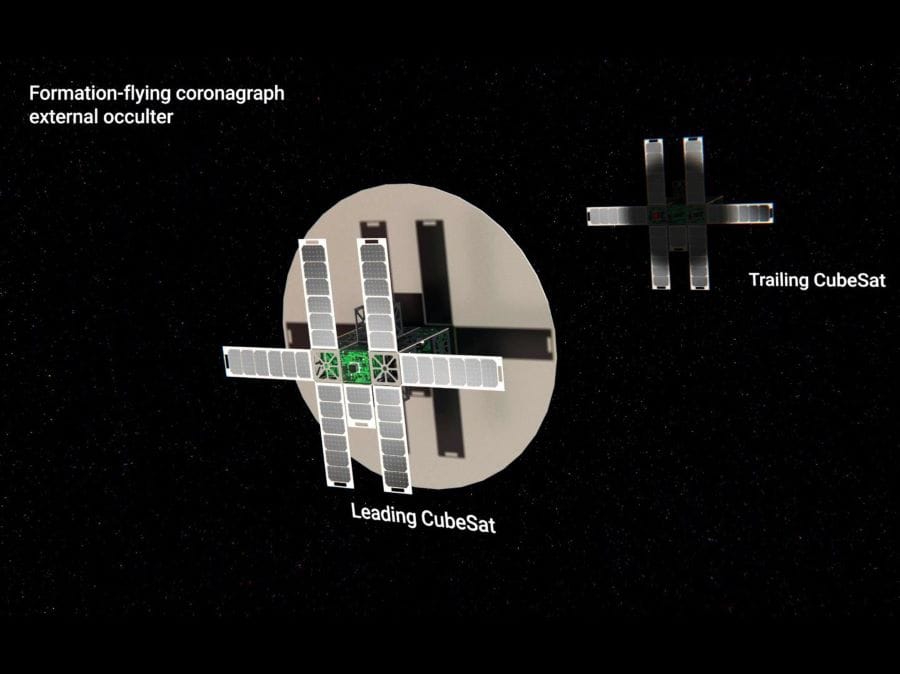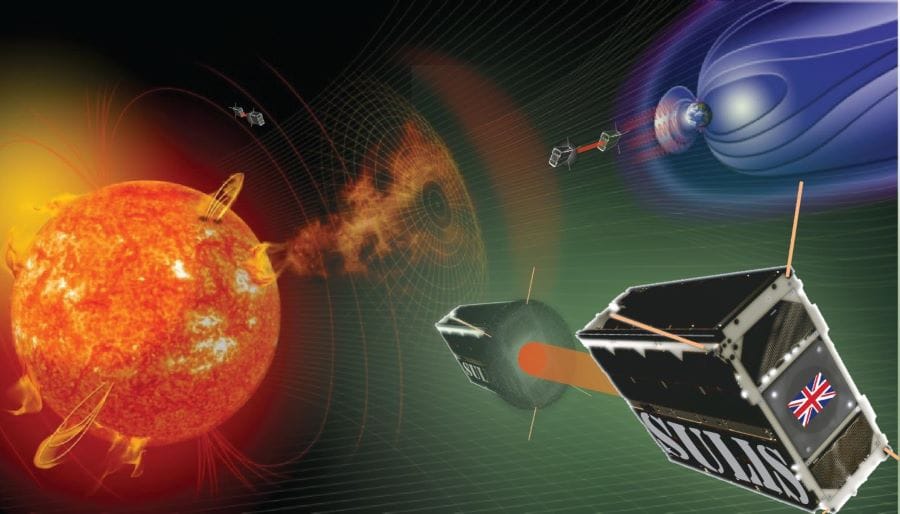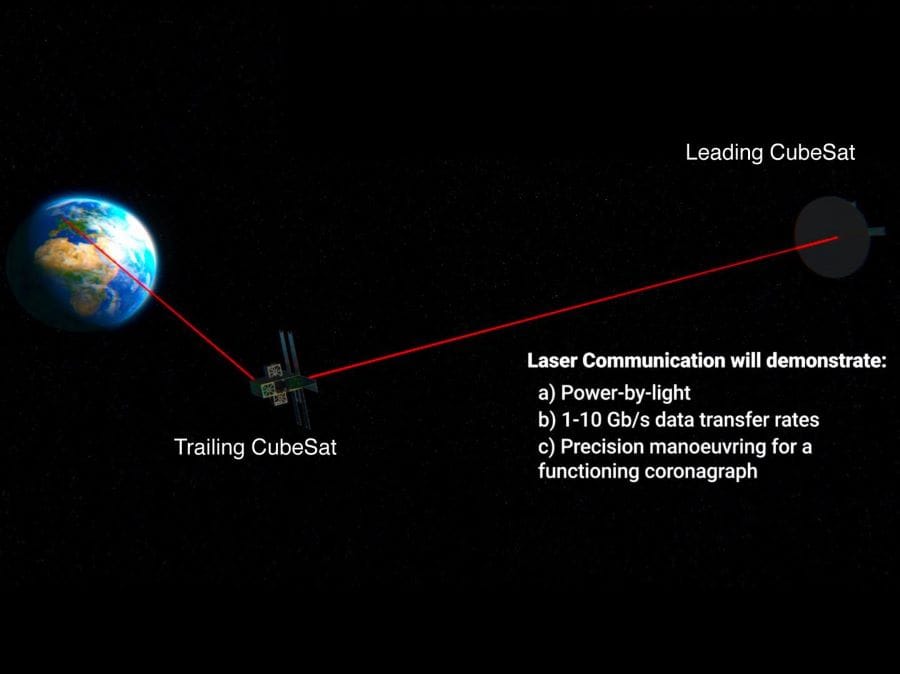
The ambitious plans were laid out at the Royal Astronomical Society's National Astronomy Meeting in Lancaster. Providing funding is secured, the mission will see three pairs of CubeSats sent into different orbits around the Sun. The ‘lead’ satellite in each pair will block out the bulk of solar light with a 90cm diameter occulter, creating a type of permanent eclipse for the satellite 100m behind it. This will enable the trailing satellite to study the Sun’s faint coronal light, or coronagraph, for each pair's projected five-year operational lifespan.
One pair of CubeSats will match Earth’s orbit of the Sun at Lagrange Point 1 (L1), with the second pair ahead of that orbit (L4) and the last pair trailing it (L5). This will provide a 3D picture of the Sun’s corona, enabling SULIS (Solar cUbesats for Linked Imaging Spectropolarimetry) to observe solar storms and coronal mass ejections (CMEs). Although we know little about what drives it, space weather has the capacity to cause widespread damage on Earth, knocking out GPS, mobile communications, radio, satellites and power grids.

"SULIS will apply high definition remote sensing in 3D to help space scientists finally understand what these magnetic clouds of charged gas are made of, how much matter they contain, what causes their eruption, how fast they are travelling and, most importantly, how damaging they could be to Earth" said lead investigator Dr Eamon Scullion of Northumbria University.
"Solar storms are unavoidable, but with SULIS we will learn about their basic building blocks in order to more accurately forecast when the next 'big one' will arrive. Having advanced warnings will enable us to take steps to minimise the impact.”
Team members were planning to test one of the mission instruments – a compact hyperspectral imager – during the July 2 solar eclipse, which took place in Chile. Developed by a team of solar scientists from Aberystwyth University, the imager is expected to be incorporated into one of the pairs of CubeSats.
"The SULIS consortium are now awaiting the outcome of the eclipse observing run with high expectations for spectacular HD images of the solar corona,” explained Aberystwyth’s Dr Huw Morgan, ahead of the eclipse.

As well as being a cutting-edge solar science mission, SULIS will also demonstrate technology for precision alignment of small satellites flying in formation, which is crucial for the accurate measurement of the coronagraph. The satellites will maintain their precise positioning using an ion propulsion system.
In addition, the mission will investigate laser power transfer in space and laser communications in Low Earth Orbit (LEO). Laser power transfer will be used to transmit energy between the CubeSat pairs, as the trailing satellite will be largely in shadow and unable to harvest the required levels of solar energy. Laser optical communications - also known as Li-Fi - will enable the satellites to transfer large amounts of data rapidly. The technology could have widespread applications for both inter-satellite communications and satellite-to-Earth transfer.




Project to investigate hybrid approach to titanium manufacturing
What is this a hybrid of? Superplastic forming tends to be performed slowly as otherwise the behaviour is the hot creep that typifies hot...